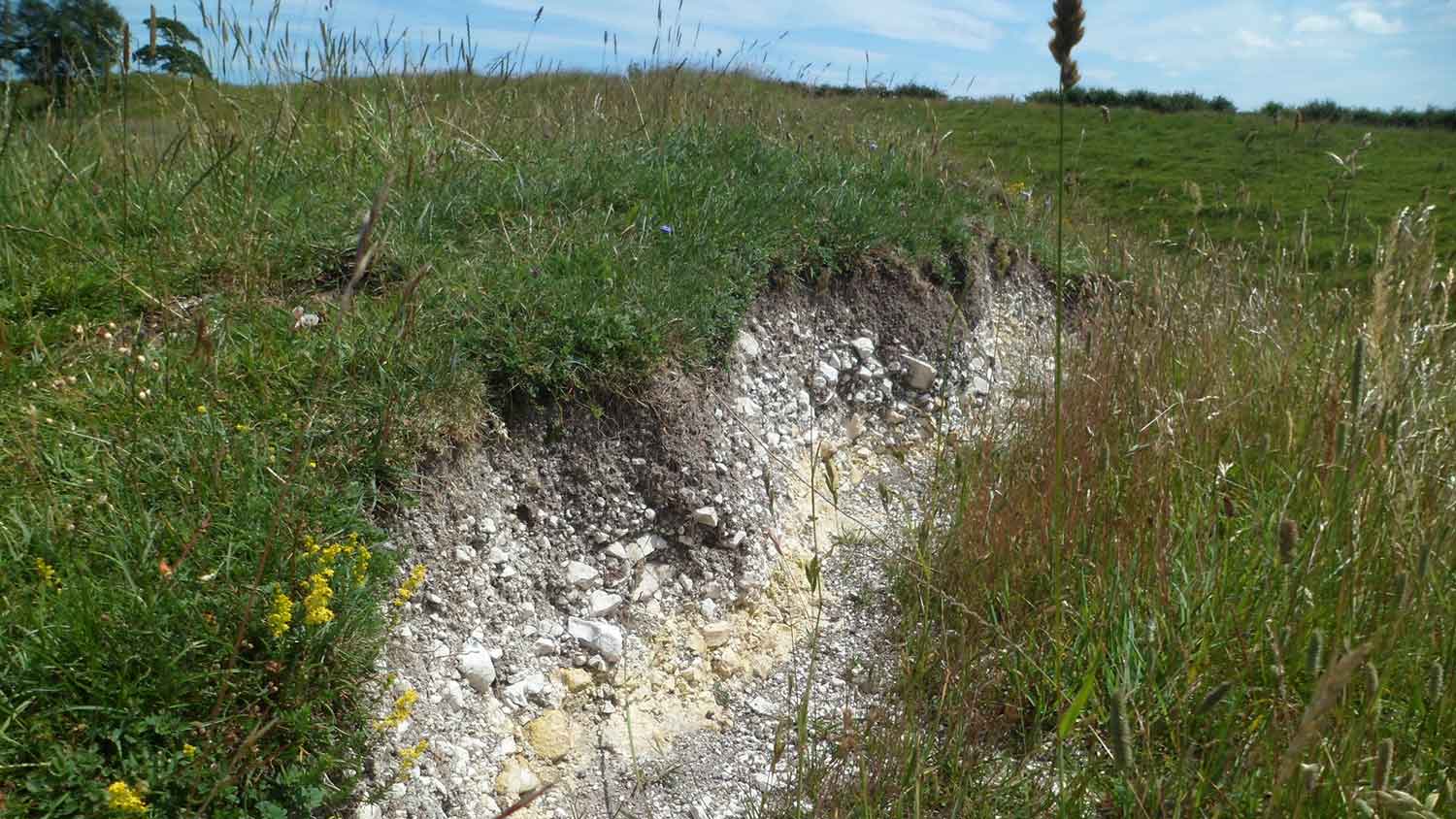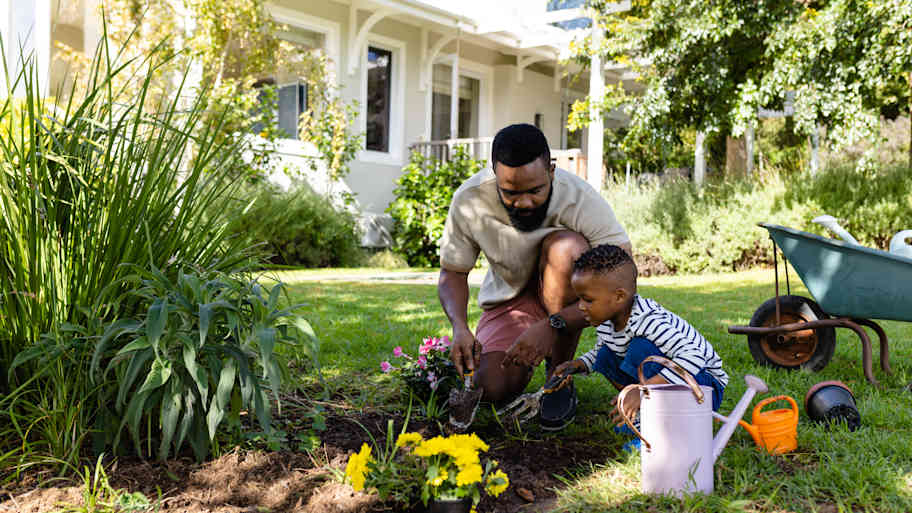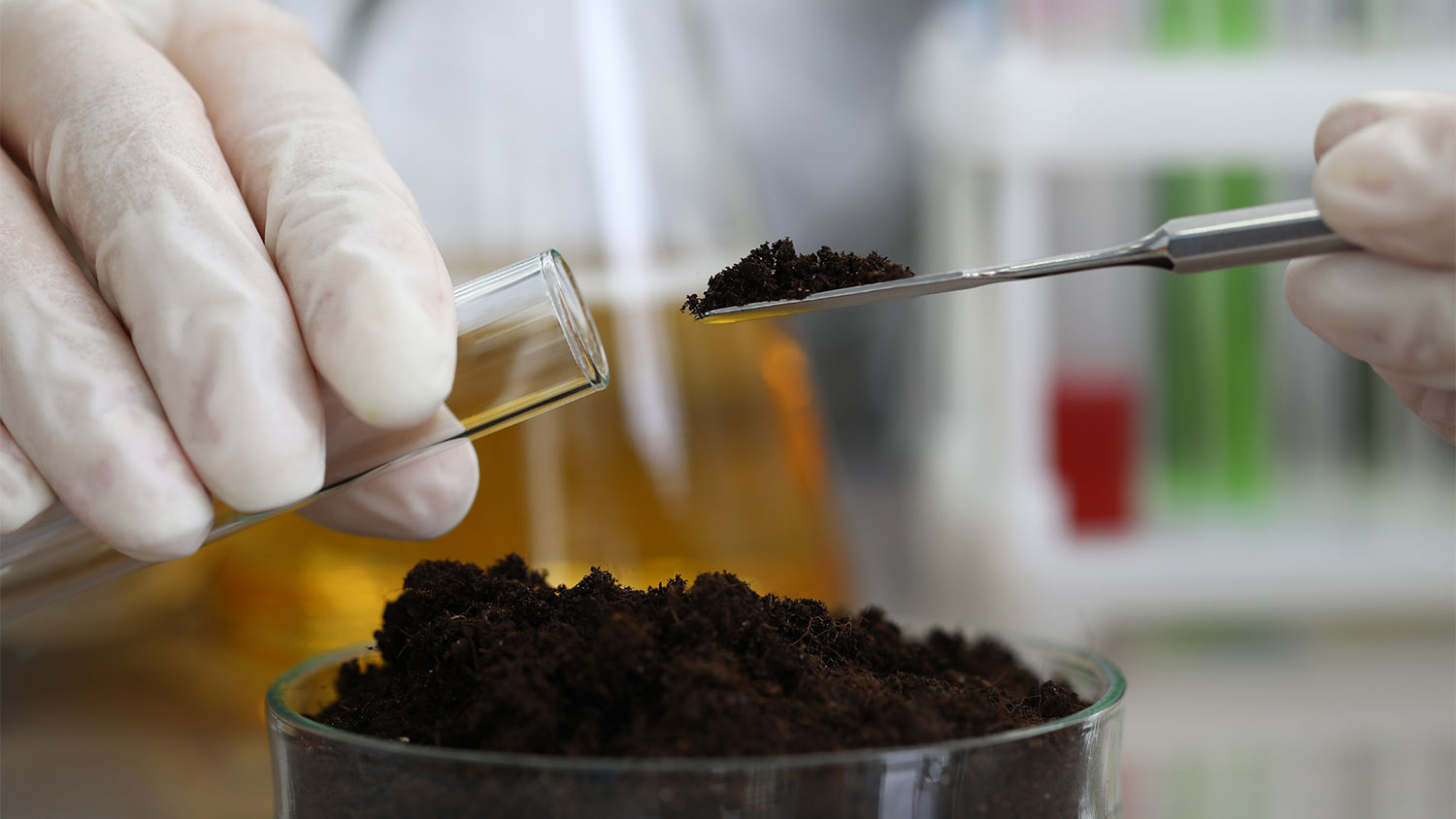
Leveling your yard can help with drainage and prevent damage to your home. Learn the cost to level a yard and what factors can affect the price.
Whether you want bigger blooms or a bountiful harvest, it’s all in the soil


No green thumb? No problem. A lush, blossoming garden doesn’t have to be a pipe dream—even if you’re the kind of gardener who could kill a cactus. In truth, how to grow a healthy garden has a lot more to do with knowledge than it does gardening talent. The right soil structure, the right pH, and the right kind of nutrients in your organic fertilizer are the difference between plants that survive and plants that thrive. These tips can help you ensure you have lots of outdoor plants you can’t kill (or, at least not very easily).
One of the first steps to creating great soil and a healthy garden is knowing your soil type. There are a lot of different soil structures, and what’s best depends on what you’re planting. If you’re not using pre-packaged garden soil, you’ll need soil addendums to fix common problems.
Loam soil is equal parts clay, sand, and silt. You’ll recognize it because it’s dark brown (almost black) and feels spongy and moist. It’s the ideal soil structure for most types of gardening.
Clay soil is usually a reddish color and stays clumped together. It can work well as a foundation if you’re planning a vegetable garden. Some flowers, like Black-Eyed Susans or Coneflowers, thrive in clay soil, but they will need finessing. Add organic matter like compost, pine bark, dead leaves, and gypsum to loosen up the clay and help with drainage.
Sandy soil is crumbly and dry, but it’s ideal for gardening with plants that need fast-draining soil like succulents, cacti, and citrus fruit trees. Unfortunately, watering easily washes nutrients away from sandy soil. You’ll need to add nutritious organic matter like compost, mulch, and organic fertilizers.
This type of soil clings to moisture and nutrients—but it can drown your plants without proper drainage. Add organic matter like compost, pine bark, or gypsum to help.

Chalky soil is alkaline (which we’ll get to below). Stick to plants that grow best in alkaline environments or fix the soil pH.
Peat comes from decomposed organic matter. Unfortunately, peat-heavy soil is acidic and lacks nutrients. Add nutritious organic matter that will lower the pH.
How to grow a healthy garden has a lot to do with soil. Most common garden plants prefer slightly acidic or neutral soil—somewhere between a pH of 6.0 and 7.0. Does this mean they’ll die in the wrong pH? Not necessarily. Instead, you’re more likely to end up with a poor crop yield or smaller blooms. In other words, your roses won’t look as rosy.
To grow the healthiest garden, from gardenia plants to green beans, use a soil test kit (or hire a local soil testing service) to check the soil pH. Most gardens will thrive at a 6.5 pH, but it depends on what you're planting. Some plants like potatoes or azaleas prefer more acidic soil. Other plants like ferns prefer slightly alkaline soil. Either way, you can alter the pH with different soil addendums:
To raise pH: add finely ground limestone or wood ash
To lower pH: add an acidic fertilizer, gypsum, ground sulfur, or organic matter like compost, sphagnum peat moss, or pine bark.
If you underwater a vegetable garden, you won’t get a bountiful crop. If you overwater your plants, it’ll lead to root rot and fungus. The truth is that a healthy garden has no watering schedule. There’s no magic length of time that will prevent water-related issues.
Instead, water your plants when the soil is dry and avoid wetting the leaves. The best time to water is early in the morning, so your plants have a full day of sun to dry out. If you’re short on time, hire a local outdoor plant watering service.
Even if you start with healthy soil, your garden soil will degrade over time. You may have to replace it every so often, but you can improve it by tilling your garden before planting, using mulch (which contains nutrient-rich organic matter and helps prevent weed growth), and regularly fertilizing.
As a rule, fertilize once during the winter using a slow-release 10-10-10 fertilizer (equal parts phosphorus, potassium, and nitrogen). During the growing season, fertilize your flower or vegetable garden every three to four weeks with quick-release fertilizer. If you’re growing fall crops, avoid fertilizing after the first frost.

Pruning may seem counterproductive, but it actually promotes new growth. If your plant isn’t wasting energy maintaining dying foliage, it can use that energy to grow new, healthy foliage. Best pruning practices include:
Removing unhealthy or diseased branches and stems
Removing dead or unwanted dead foliage
Pinching dying flowers below the bloom during the growing season
Trimming excess growth throughout the growing season
If you’re growing more than flowers, it’s also important to make sure that you harvest your vegetables at the right time.
Those new to gardening might think weeds are harmless (if not just a little unsightly). The truth is that they’re a magnet for pests and can suffocate your garden’s roots. You can weed your garden a few ways:
Dig out weeds by hand (don’t forget the roots)
Use a weedkiller (either a spray or gel)
Cover weeds with mulch or plastic
Use a weed wacker or gardening hoe to chop large weeds
If you have healthy soil, weeds will usually pop up every now and again. To avoid the headache, consider hiring a top-rated local gardener.
Staking is a common gardening practice that uses a pole or trellis to give your plants extra support and prevent stems from bending or breaking. When used in a vegetable garden, it promotes healthy growth in cucumbers, peppers, tomatoes, beans, and other vining veggies. It’ll also give support to tall sunflower stalks and saplings.
Cover crops are common in sustainable farming, but they’re also a useful gardening trick for healthier vegetable gardens. Basically, a cover crop is a secondary plant in your garden bed that will ward off pests and diseases, provide nutrients, thwart weeds, improve moisture and drainage, and slow down erosion. Try planting a cover crop like clovers, alpine strawberries, or rapeseed.
From average costs to expert advice, get all the answers you need to get your job done.

Leveling your yard can help with drainage and prevent damage to your home. Learn the cost to level a yard and what factors can affect the price.

How much does hardscaping cost project by project? Check out our breakdown for every price tag you need to know, from outdoor fireplaces to patios.

Landscape curbing can really improve the look of a yard, but at what cost? Find out how much it costs and the different ways you can do it

While similar, comparing dirt versus soil comes down to what's inside the material, its usefulness, and how it performs, depending on how you intend to use it.

Get a clear breakdown of geotechnical report costs, including average prices, cost factors, and tips to help homeowners budget for their project.

If you need to get rid of a bush, here’s how to handle this project in a few simple steps. Follow our step-by-step instructions.